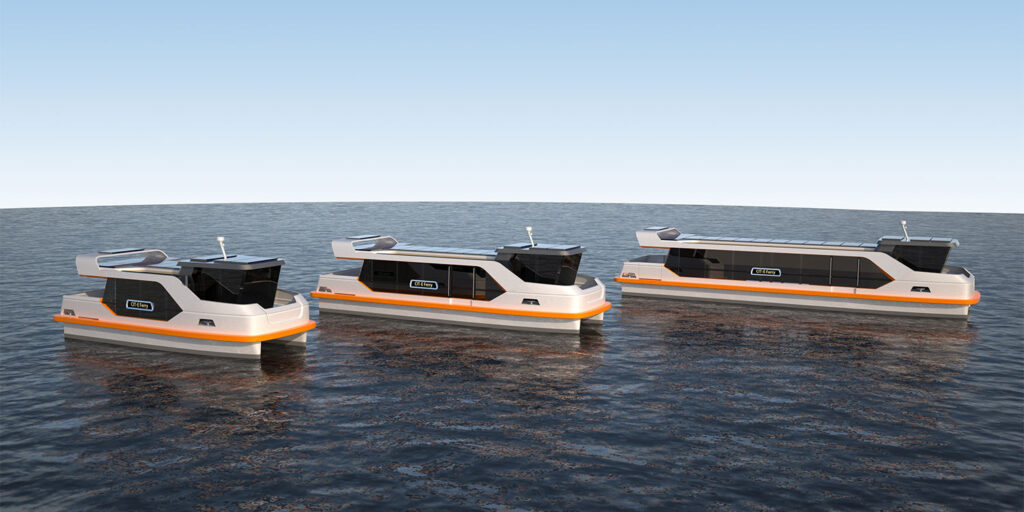The CIT-E passenger ferry takes public transport into the future
Fassmer shipyard, leader in series production of composite boats, and Torqeedo, market leader in electric propulsion systems for boats, have joined forces to present an all-electric ferry concept for public transport: the Fassmer CIT-E Ferry, powered by a Torqeedo integrated propulsion system.
“When Fassmer and Torqeedo started to discuss the CIT-E Ferry concept, we wanted to address several topics facing urban centers. By 2050, the global population will reach 10 billion, with 75% of people residing in cities. Facing this rapid population shift and the resulting gridlock of land-based transportation, urban planners are looking to their waterways to ease congestion on city streets. Many cities are creating intermodal public transport networks integrating climate-friendly water taxis, ferries and other passenger vessels. We are proud to make a small contribution to avoid emissions with our integrated electric drive system,” says Matthias Schubert, Torqeedo‘s director for commercial sales.
The CIT-E Ferry can be operated on inner-city waterways in a very cost-effective manner: commuter vessels typically operate at efficient speeds and are in use for 8-14 hours, leaving plenty of time for overnight charging. This reduces infrastructure and battery bank costs, making the whole investment even more economically and ecologically beneficial.
The heart of Fassmer’s CIT-E Ferry
Torqeedo ‘s award-winning and highly efficient Deep Blue propulsion system is the heart of Fassmer ‘s CIT-E Ferry. The twin steerable thrusters deliver 100 kW continuous power (130 kW peak power) and rotate up to 360 degrees, making the CIT-E Ferry easy to maneuver even in the narrowest urban waterways.

Deep Blue lithium-ion batteries, with a battery pack capacity of between 80 kWh and 1 MWh, power the integrated propulsion system. These high-capacity batteries meet the requirements of IEC 62619 and IEC 62620, making them suitable for use with the CIT -E Ferry according to the ES-TRIN standard (European standard establishing the technical requirements for inland waterway vessels). A DNV-GL approved battery variant is also available.
Fassmer’s CIT-E Ferry complies with the ES-TRIN 2021 standard and has a capacity of up to 100 passengers. The modular concept allows the customer to adapt the vessel’s overall length from 12 to 24 meters, depending on the route serviced. The lightweight GRP construction outperforms any steel or aluminum design and is optimized for use of Torqeedo’s Deep Blue integrated propulsion system. The catamaran’s efficient hull, designed by Judel/Vrolijk & Co., can reach speeds of up to 25 km/h. Depending on the overall capacity of the battery, 14 hours of daily operation without recharging are possible.

In addition, the customizable interior design allows for all individual customer needs and vessel routing to be taken into account, with flexible seating versus standing room, space for wheelchairs, bicycles and prams, a LED lighting system, air conditioning, skylights and an entertainment system. For longer routes or boat tours, toilets, kiosks and snack vending machines can also be integrated into the design.
“Decades-old marine diesel engines power most commercial fleets in European cities. The CO2 emissions are not in line with the international goals to reduce global warming, and human health is also at risk. Our cities’ air quality suffers from emissions, particularly due to ferries which dock frequently. Our CIT-E Ferry design with electric drive offers the urban mobility of the future without any air or noise pollution,” states Fassmer’s sales manager for boats and davits, Wolfgang Moewes.


